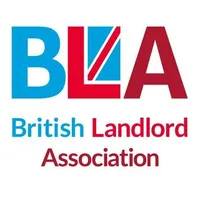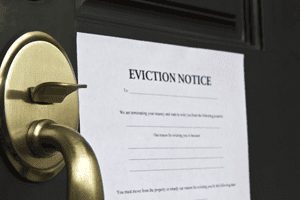
What is the new Green Homes Grant?
The Green Homes Grant scheme, which was been announced by chancellor Rishi Sunak in July is available from tomorrow (30/09/2020). It provides £2bn for home improvement projects as part of a broader £3bn government plan to cut carbon emissions.
Homeowners which includes landlords who will be able to claim vouchers of up to £5,000 for energy-saving home improvements. The poorest will get up to £10,000. This is part of the new £2 billion Green Homes Grant initiative.
How does the Green Homes Grant scheme work?
The Green Homes Grant scheme is intended to help homeowners and landlords in England who can apply for useful money-saving and energy-saving vouchers.
The benefits will be far-reaching, households could gain £300 a year in savings on energy bills. The scheme will help create 140,000 new green jobs. It is also predicted to reduce carbon emissions by half a megatonne. Which are equivalent 270,000 fewer cars on our roads.
With the way we heat our homes which accounts for 15% of the UK’s carbon emissions. The new Green Homes Grant is a good initiative to kick carbon emissions into submission.
The government is committed to reaching net-zero carbon emissions by 2030. This will help to halve the carbon footprint.
Landlords in England need to act now to make full use of the Green Homes grant. Landlords should assess the energy efficiency of their properties now so they can identify where they can use the grant money.
The online applications for the Green Homes Grant open in September 2020.
The UK Government under the new Green Homes grant will pay two-thirds of energy-efficient home improvements in some cases up to £10,000 per property.
This Green Homes grant scheme is also intended to put money back into the economy to stimulate the failing economy and support jobs. A small contribution when it comes to the cash injection; however, every little bit helps.
The British Landlords Association are urging members for them to apply for the grant in about a month to get their properties assessed for energy efficiency done now.
Experts in energy efficiency do not all agree if the new Green Homes Grant is dealing with the core problems. Dr Chris Roberts, who is the assistant lecturer at the Birmingham City University’s School of the Built Environment, said: “There’s the question of funding being allocated for insulation as opposed to tackling the use of gas boilers. They arguably present a far more pressing environmental concern,“. He said.
An EPC assessment will identify the energy inefficiency of a building and what you can claim to improve the efficiency of the building. Existing EPC may prove to be useful to determine where improvement is required to raise the energy efficiency of a home.
Members need to get their applications in as fast as possible because thousands of people will apply.
The likelihood of the government tightening energy efficiency regulations still further in 2021 is extremely high.
This will mean landlords may have to spend considerable money, improving energy efficiency in 2021/2022.
Mrs Helen Cartwright from the British Landlords Association said: “improvements that will raise the energy performance rating EPC can include replacing old wooden windows and doors for double glazing units, wall and loft insulation.” “Existing EPC may be useful if members require another EPC, they can use the BLA discounted EPC through our provider.” She said.
Currently, owners of buildings cannot let with an energy performance rating of F or G (unless they qualify for an exemption).
Members should be taking steps now to prepare for works that can be done with the grant funding that is being made available by the Government.
Renter will also benefit as they will achieve a reduction in their annual fuel bills.
Overview of the Green Homes Deal
The Green Deal helps you make energy-saving improvements to your home and find the best way to pay for them.
Under the Green Homes improvements that may save you the most energy depend on the building. These are the typical examples:
insulation, such as a solid wall, cavity wall or loft insulation
heating
draught-proofing
double glazing
renewable energy generation, such as solar panels or heat pumps
How will the Green Homes vouchers work?
The grant will pay for two-thirds of the cost of the energy efficiency work – a homeowner installing cavity wall and floor insulation costing £4,000 would only pay about £1,320, with the Government contributing the remaining £2,680.
Those renters on the lowest incomes could claim the full costs worth up to £10,000.
The Government has published further information on the energy efficiency measures which the vouchers can be used for. The Government will publish a list of accredited suppliers too.
Once the supplier has provided a quote and the work has been approved, a voucher can be issued to commence with the work.
Secondary measures If you install at least one primary measure, your voucher can be used to help cover the cost of any of the following secondary measures. Secondary measures are:
draught-proofing double/triple glazing (where replacing single glazed windows) secondary glazing (in addition to single glazing) external energy-efficient doors (replacing single glazed or solid doors installed before 2002) heating controls hot water tank thermostats and insulation. The amount you get towards the cost of secondary measures cannot exceed the amount you get for primary measures.
How to find out more on the Green Home Grant? You can also talk to Simple Energy Advice if you’re in England or Wales, or Home Energy Scotland if you’re in Scotland Simple Energy Advice Telephone: 0800 444 202 Monday to Friday, 8 am to 8 pm Home Energy Scotland Telephone: 0808 808 2282 Monday to Friday, 8 am to 8 pm Saturday, 9 am to 5 pm Find out about call charges The Green Deal is not available in Northern Ireland.
And while the Government has confirmed that while the Simple Energy Advice service suggests “appropriate improvements” to homeowners, it says there’s no requirement to use the measures it suggests and owners won’t need to have assessments of their homes.
Can you claim Green Home Grant if you have low income or on benefits?
People who qualify for the low-income scheme must receive at least one of the following benefits:
Income-based Jobseekers Allowance (JSA)
Income-based Employment & Support Allowance (ESA)
Income Support (IS)
Pension Guarantee Credit Working Tax Credit (WTC) Child Tax Credits (CTC)
Universal Credit (UC)
Disability Living Allowance (DLA) Personal Independence Payment (PIP)
Attendance Allowance Carer’s Allowance Severe Disablement Allowance Industrial Injuries Disablement Benefit Contribution-based Jobseekers allowance (JSA) Contribution-based Employment & Support Allowance (ESA)
Housing benefit Landlords can’t apply for the low-income part of the scheme.
How to Redeem your Green Deal Home Improvement Fund voucher and how to get paid
Warning when obtaining Green Deal Home Quotes
Under the Green Deal Home improvement fund, there are a limited amount of approved companies who you can use. The feedback we are getting from some members is that a few of these companies are overcharging. It may be a good idea to get quotes from *approved companies before proceeding.
*One of the quotes should be a non approved company so you can see if prices are inflated and if so by what margin. Your feedback would be appreciated on this topic.
You can visit “Simple Energy Advice” website to find out more information which is sufficient for you to proceed in obtaining a grant should you wish.
Source: British Landlord Association
Author: Marc Attwater
Date: 20th of July 2020 (Updated: 28/9/20 & 9/10/20)
Membership With the British Landlords Association is Free, Join now!




